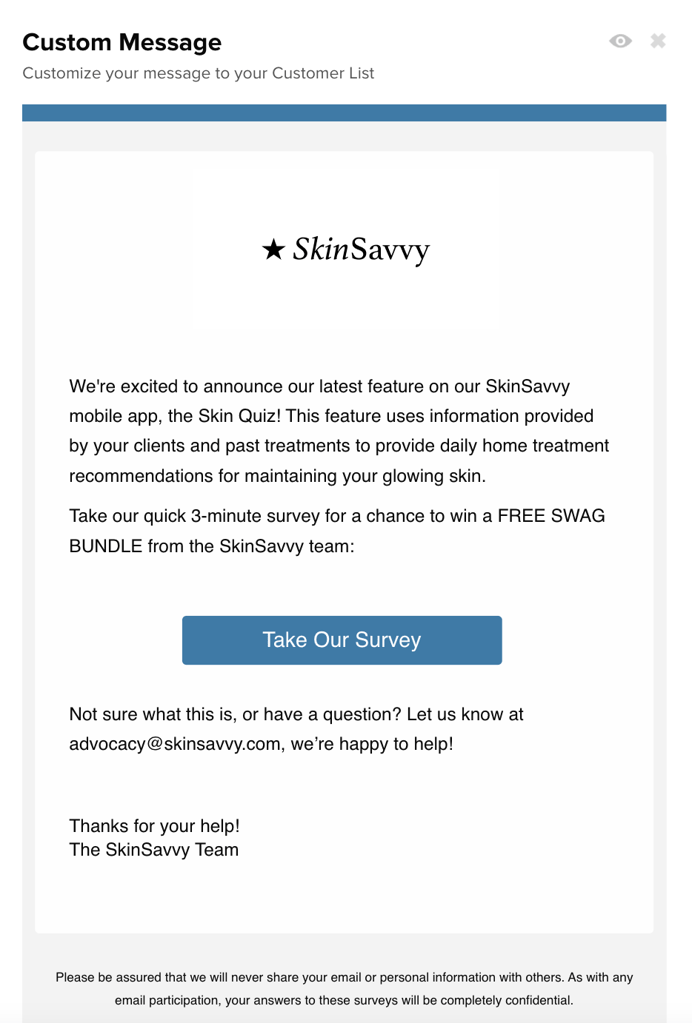Conversations with customers go beyond mere transactions—they are the building blocks of lasting relationships, the kind that transform first-time users into loyal advocates. But here’s a probing question: “How do I talk more with my customers?” This question uncovers a crucial aspect of business growth: engaging effectively with your users.
Take a moment to reflect. As a product team or business owner, you likely feel most at home discussing the intricacies of your product. After all, it’s what you breathe day in and day out. This comfort zone, while essential, often overshadows a critical area—user engagement.

Breaking the Echo Chamber
This striking illustration from Yaakov Carno elegantly paints the picture of how teams can prolifically discuss their product but fall short when articulating knowledge about their users.
Without regular and meaningful user engagement, teams risk becoming echo chambers. Decisions get influenced by the Highest Paid Person’s Opinion (HiPPO), and the focus shifts to churning out features—becoming a ‘feature factory’—rather than solving real customer problems.
Understanding your users as intimately as you know your product is pivotal. Their behaviors, preferences, pain points, and experiences are the compass that should guide your product roadmap. But how can you bridge the gap?
Engaging in Customer Conversations
- Know Your Audience– Before jumping into conversations, do your homework. Understand your customers, segment them and learn about their interests. Use data analytics and customer feedback to create personas your team can refer to.
- Create Multiple Touchpoints– Enable conversations through various channels. Be it social media, email, surveys, or customer support, make it easy for customers to reach out. Each touchpoint is an opportunity for engagement.
- Foster a Culture of Curiosity– Encourage your team to ask questions. Curiosity leads to a deeper understanding of customer needs. Adopt a stance of learning from your users, not just informing them.
- Embrace Active Listening– During conversations, listen more than you speak. Active listening involves paying full attention, understanding, responding, and then remembering what the customer says.
- Facilitate Community Building– Create forums or user groups where customers can interact with each other. Peer-to-peer conversations can offer insights that direct queries might not.
- Leverage Technology– Use CRM systems and communication tools to track and facilitate conversations. Automated tools can help you maintain a consistent presence and prompt responses.
- Educate Your Team– Invest in training your team about the importance of customer conversations. They should be adept at communication skills, emotional intelligence, and problem-solving through dialogue.
- Analyze and Act on Feedback– Turn conversations into actions. Analyze the feedback, identify trends, and use them to make informed product decisions.
- Personalize Interactions– Tailor your communications to the individual level. Personalization shows customers that you value them as individuals, not just as sales numbers.
- Measure Success– Set clear KPIs for customer engagement. Track how conversations influence customer satisfaction, retention, and ultimately, the bottom line.
- Celebrate Success Stories– Share positive outcomes of customer conversations within your team. It encourages the behavior and highlights the impact of customer-centric thinking.
Navigating Away from HiPPO-Driven Decisions
The dangers of operating within an echo chamber cannot be overstated. In many organizations, especially those with rigid hierarchies, the highest-paid person’s opinion (HiPPO) can inadvertently steer the ship. When decisions are based on the views of a few rather than the collective insights of the actual users, the result is a “feature factory” mentality. This is where the team’s effort is funneled into producing outputs — new features, updates, or enhancements — not because the users need them, but because they are dictated by those at the top or by the internal team’s assumptions and biases.
Recognizing the Echo Chamber
An echo chamber occurs when an idea, whether good or bad, is amplified by repetition within a closed system. In the context of a product team, it means repeating and implementing strategies without external input, specifically from customers. In such environments, there’s a tendency to prioritize what seems right internally rather than what’s validated by user engagement and feedback.
HiPPOs and the Push for Outputs
HiPPO-driven decision-making is when the opinions of the highest-paid, or most senior individuals in an organization, overshadow data-driven decision-making processes. It’s a significant concern when these individuals are far removed from the daily use and experience of the product. This top-down approach often leads to a fixation on quantity over quality — more features, more releases, more, more, more — without considering if these are what customers really want or need.
The Helio Customer Conversation Blueprint
All this talking about having conversations is fine, but it’s a lot of work to keep up on a daily basis. Here’s where Helio can help product teams, just as it did with the beauty brand SkinSavvy when building an advocacy program with their product providers.
With this blueprint in mind, let’s delve deeper into initiating and maintaining productive customer conversations.
1. Ask Open-Ended Questions
Start conversations with questions that can’t be answered with a simple ‘yes’ or ‘no.’ Ask about their experiences and encourage stories. This opens the door to valuable insights.
SkinSavvy’s network of beauty providers in salons across the country use social media as a common communication device with their own consumer bases’. With that in mind, SkinSavvy knew that they needed to better support their providers when providing information and offers for their products. Using open-ended questions, SkinSavvy was able to connect with hundreds of their providers through Helio to learn more about their favorite ways to market on social sites:

I like to post before and after photos, but also like to post informative posts. I find that the informative posts take more time to create. Photos are easy because you can type up the info quickly. Informative posts take more time to put together.

– Helio Participant
Maintain a Conversational Tone
Keep the conversation light and approachable. Even when discussing complex topics, aim to make the customer feel comfortable and understood.
The SkinSavvy team found that they could optimize the engagement on their surveys by offering something they know is enticing for their providers: swag!

When company swag likes t-shirts and tote bags are offered in their survey invites, SkinSavvy sees their response rate increase by 34%. SkinSavvy currently has over 1,000 customers who have personally volunteered to be part of their regular brand surveys, and routinely get hundreds of responses on each survey. The communication with their customers has not only improved their features, but also illuminated aspects of their customer relationships they hadn’t considered.
Show Empathy and Appreciation
Always acknowledge the customer’s feelings and thank them for their input. Empathy goes a long way in building trust.
One of the aspects SkinSavvy has heard works well in their customer communication is using the Heart and Replies features within Helio. When providers give a particularly thoughtful response, Helio allows you to send your gratitude to participants with a little love:

This Like feature sends a short message to your customer thanking them for their feedback. Along with the swag rewards and constant communication, these small touchpoints go a long way towards keeping your advocate audience engaged with providing their feedback.
Follow Up
Don’t let the conversation end at the first interaction. Follow up, provide updates on issues they’ve raised, and inform them how their feedback is used. In fact, you can follow up directly with respondents in Helio. See the screenshot below.

This customer’s idea for a rewards program was a great suggestion for what more they want for SkinSavvy, and their follow-up reply provided even more insight into what their customer is thinking. These responses also shined a light on what competitors SkinSavvy can look at to see examples that their providers have already found to be successful.
Strategies to Dismantle the Echo Chamber
- Institute a Data-Informed Culture: Emphasize decision-making based on user data and analytics. Helio provides a simple and east way to do this weekly. Allow numbers and user stories to speak louder than hierarchy.
- Democratize Feedback: Encourage a culture where feedback comes from all levels of the organization, and all team members are empowered to voice user-centric ideas.
- Validate Before Building: Adopt a lean approach where features are prototyped and validated with real users before fully developed.
- Foster Cross-Functional Teams: Create teams that include members from different departments such as marketing, sales, customer service, and product development to ensure a 360-degree view of the user experience.
- Train on Bias Awareness: Educate the team about cognitive biases and train them to recognize when decisions are being made without sufficient user input.
- Promote Regular User Interaction: Make direct user interaction a part of the job description for the customer support team and those involved in product decisions.
By understanding the pitfalls of an echo chamber and taking proactive steps to promote a culture of user engagement, organizations can shift from being a feature factory to becoming a customer-centric entity. This shift is not just beneficial; it’s critical in an era where user experience can make or break a product’s success in the market.
Turning Conversations into Connections
Engaging in customer conversations is not just about gathering data; it’s about fostering relationships. By integrating these strategies into your day-to-day operations, you will understand your customers better and align your product more closely with their needs.
Remember, every conversation with a customer is a golden opportunity to turn feedback into features that matter, to turn interest into loyalty, and to turn your product into a solution that resonates with users.

So, ask yourself: Are you ready to turn those single lines into paragraphs of user stories and testimonials? Speak with a Helio expert to learn how you can quickly balance your knowledge of your product AND your users, like the marketed up version of Yaakov Carno’s illustration above.
Customer Conversations FAQs
Customer conversations provide invaluable insights into user preferences, expectations, and pain points. Engaging in direct dialogues with users helps businesses uncover nuanced feedback that traditional surveys might miss. This qualitative data is essential for understanding the “why” behind user behaviors, enabling more informed decision-making for product and marketing strategies.
By facilitating direct interactions between your team and users, customer conversations offer real-time feedback on product features, usability, and overall satisfaction. This iterative feedback loop accelerates the product development cycle, ensuring that your team can quickly adapt to user needs and preferences, ultimately leading to more successful and user-friendly products.
Absolutely. Engaging in customer conversations allows your marketing team to better understand the language, motivations, and challenges of your target audience. This deep understanding enables the creation of more targeted and resonant marketing campaigns, messaging, and content, resulting in increased customer engagement and loyalty.
Our survey platform’s on-demand audience feature enables businesses to reach specific demographics or user segments quickly. This efficiency ensures that you can gather feedback from relevant user groups promptly, reducing the time and resources needed for traditional recruitment. This agility is crucial for staying responsive to market changes and maintaining a competitive edge.
Yes, engaging in ongoing customer conversations is a proactive strategy for staying attuned to market trends. Users often provide early indicators of emerging preferences, industry shifts, and competitive landscape changes. By regularly tapping into these conversations, businesses can adapt their strategies in real-time, positioning themselves as industry leaders responsive to evolving customer needs.



